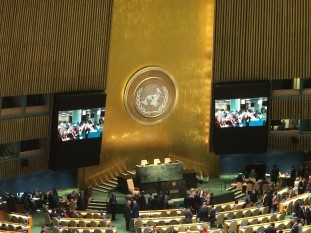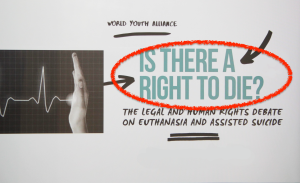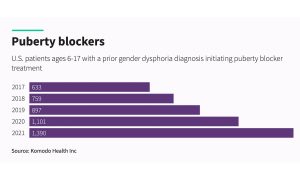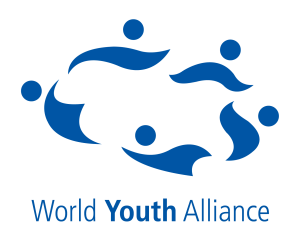English
A recent article on the Huffington Post claimed in its title that a United Nations committee had recognized abortion as a human right in the complaint of K.L. against Peru. However, the article misrepresents international law and the actual report. Not only is abortion not a right in international law, no U.N. committee has the right to make it so, or “affirm” it as one.
The Human Rights Committee (HRC) makes recommendations to Member States who have signed the International Covenant on Civil and Political Rights (ICCPR). Under the Optional Protocol to the ICCPR, the Committee can, under limited circumstances, hear complaints against parties to the ICCPR and Optional Protocol for possible violations of the ICCPR’s provisions. The facts described below are taken from the text of the Committee’s views, which can be downloaded here. The facts in the Views were taken entirely from the complainant’s submissions, as Peru did not respond to Committee inquiries.
K.L. was 17 when she became pregnant in 2001 (Views of Human Rights Committee Concerning Communication No. 1153/2003, ¶ 2.1). Tests revealed her child had an abnormality known as anencephaly, a rare disorder in which the skull does not properly form during pregnancy and typical results in the death of the child during pregnancy or shortly after birth (¶ 2.1). K.L.’s doctor advised her of this fact, and told her she could continue the pregnancy or have an abortion under the law, recommending the latter (¶ 2.2). She chose to have an abortion (¶ 2.2).
However, the director of the hospital did not think she met the legal requirements for an abortion (which is permitted if the mother has a risk of death or permanent health damage), and refused to permit the procedure (¶ 2.3). There was no process for her to appeal his decision. K.L. later gave birth to a daughter with a disability who lived four days (¶ 2.7). She suffered depression following this experience, and told the Committee that the government offered her no counseling or psychological care (¶ 6.5). She brought a complaint against Peru under several provisions of the ICCPR, on the basis that she was denied the exercise of a right (to have an abortion authorized under the law) (¶ 3.1) and suffered harm from it.
When a country grants a right, not allowing someone to exercise that right may make it liable under treaties such as the ICCPR. That is what happened here: Peru permitted abortion under some circumstances, but denied K.L. an abortion—and gave her no way to challenge that decision.
The Committee adopted the view that there had been a number of violations. In the Committee’s view, the mental anguish K.L. suffered was due to the refusal to provide her an abortion, and constituted “cruel, inhuman, or degrading treatment” under article 7 (¶ 6.3). Taking K.L.’s allegations as true, there was no valid reason to deny her the exercise of her rights under Peruvian law, which therefore unjustifiably violated her right to private and family life under article 17 (¶ 6.4). The Committee found that the failure to offer counseling violated the obligation to provide special protections to minors under article 24 (¶ 6.5). Because she had no legal remedy (as it was too late for an abortion, and she had had no way to appeal the hospital director’s decision), the HRC also adopted the view that she had suffered a violation under article 2 (¶ 6.6).
The HRC did note that it had previously recommended that Peru “establish exceptions to the prohibition and punishment of abortion,” as its law was not compatible with articles 3, 6, and 7 of the ICCPR (Concluding Observations of the Human Rights Committee to Peru, CCPR/CO/70/PER ¶ 20). But in this case, the Committee failed to find a violations of article 3 based on the evidence presented (¶ 5.3), indicating that this decision was not based on Peru’s prohibition of abortion, and did not examine whether she had suffered a violation of her article 6 right to life (¶ 6.3). The HRC adopted these Views over ten years ago; the only “news” is that Peru has decided to compensate K.L. after all this time.
As WYA has explained in a white paper on reproductive health, international law can only be created by treaty or custom—not by treaty monitoring bodies like the HRC. The ICCPR makes no mention of abortion, and the terms of treaties are to be understood in their ordinary meaning, not expansively (Vienna Convention on the Law of Treaties, art. 31). As many states limit or prohibit abortion, there is no customary law requiring that abortion be legal. Abortion is not a human right, and a UN committee can neither make it one nor “affirm” it as one. The HRC does not have the authority to create international law, and it cannot read rights into international law that are not part of a treaty or custom. This is true even in the Optional Protocol’s complaint mechanism, as reflected in the fact that the Committee publishes “views” on disputes, not legal “decisions.”
K.L. deserved compassion and support. To lose a child is extremely difficult, and the fact that she was young herself and not offered counseling compounds the tragedy. WYA agrees with the HRC that she should have received psychological care. However, although a prenatal diagnosis that a child has a life-limiting condition is an extremely difficult situation, it cannot justify deliberately ending the life of a human being. Programs such as perinatal hospice respect the dignity of the child while offering compassionate assistance to the parents. As a parent support group in Ireland notes, while a child’s medical status may limit their life expectancy, children with severe medical conditions and disabilities are not only “compatible with life,” but also “compatible with love.”
Human dignity is inherent in every human being, no matter her age, medical condition, or disability status. As young people committed to human dignity, we should stand in solidarity with both the parents and the child affected in these circumstances, offering compassionate care to all.
Español
En un reciente artículo del Huffington Post se afirmó que un comité de las Naciones Unidas había reconocido al aborto como derecho humano, producto de una demanda de K.L contra Perú. Sin embargo, el artículo malinterpreta y tergiversa al Derecho Internacional y al propio informe. No solo el aborto no es un derecho reconocido en el Derecho Internacional, sino que tampoco un Comité de la ONU tiene la potestad para reconocerlo o afirmar que sí lo es.
El Comité de Derechos Humanos (HCR por sus siglas en inglés) se encarga de hacer recomendaciones a los Estados parte del Pacto Internacional de Derechos Civiles y Políticos (PIDCP). En virtud del Protocolo Facultativo del PIDCP, el Comité puede, en ciertas circunstancias, escuchar las demandas contra los Estados parte del PIDCP por posibles violaciones de las disposiciones de dicho pacto. Los hechos descritos a continuación fueron tomados del texto de las Observaciones del Comité, el cual puede descargarse aquí. En las Observaciones se tomaron los hechos únicamente de las alegaciones del demandante, pues Perú no contestó a las preguntas del Comité.
K.L. tenía 17 años cuando quedó embarazada en 2001 (Observaciones del Comité de Derechos Humanos respecto a la comunicación N° 1153/2003, ¶ 2.1). Los exámenes médicos mostraron que su hijo tenía una anomalía conocida como anencefalia, un raro trastorno en el que el cráneo no se forma correctamente durante el embarazo y lo común es que el niño muera durante el embarazo o poco tiempo después de nacer (¶ 2.1). El doctor de K.L. le advirtió de esto y le dijo que podía continuar con el embarazo o practicarse un aborto legal, recomendándole hacer lo segundo (¶ 2.2). Ella eligió la segunda opción (¶ 2.2).
No obstante a ello, el director del hospital consideró que ella no cumplía con los requisitos legales para practicarse un aborto (el cual es permitido si peligra la vida de la madre o si hay riesgo de daños permanentes en su salud), y no aprobó el procedimiento (¶ 2.3). No hubo un proceso para que ella pudiera apelar esa decisión. K.L. dio a luz a una niña que nació con una discapacidad y vivió por cuatro días (¶ 2.7). Luego de esta experiencia, ella sufrió depresión y le dijo al Comité que el gobierno no le ofreció ningún asesoramiento ni atención psicológica (¶ 6.5). Ella presentó una demanda contra Perú basándose en varias disposiciones del PIDCP, con el fundamento de que a ella le negaron el ejercicio de un derecho (tener un aborto legal) (¶ 3.1) y sufrió daños por ello.
Cuando un país garantiza un derecho y no permite a una persona el ejercicio del mismo, puede ser responsable en virtud de los tratados como el PIDCP. Eso es lo que pasó en este caso: Perú legalizó el aborto en determinadas circunstancias, pero le negó a K.L. un aborto y no le dio medios para apelar esa decisión.
El Comité observó que habían ocurrido una serie de violaciones. En la opinión del Comité, la angustia mental que K.L sufrió fue por la negativa de practicarle un aborto, y constituyó un “trato cruel, inhumano o degradante” según el artículo 7 (¶ 6.3). Tomando los alegatos de K.L. como verdaderos, no había ninguna razón válida para negarle el ejercicio de sus derechos en virtud de la legislación Peruana, y por lo tanto se violó injustificablemente su derecho a la vida privada y en familia según el artículo 17 (¶ 6.4). El Comité consideró que el hecho de no haberle ofrecido asistencia psicológica violó la obligación de proveer protección especial a los menores, en virtud del artículo 24 (¶ 6.5). Debido a que no existía una solución jurídica para ella (pues era ya muy tarde para practicarse un aborto y tampoco había podido apelar la decisión del director del hospital), el Comité de Derechos Humanos también opinó que ella había sufrido una violación de conformidad con el artículo 2 (¶ 6.6).
El HRC señaló que previamente le había recomendado a Perú “establecer excepciones a la prohibición y sanción del aborto”, pues su legislación no era compatible con los artículos 3, 6 y 7 del PIDCP (Observaciones finales del Comité de Derechos Humanos a Perú, CCPR/CO/79/PER ¶ 20). Pero en este caso, el Comité no pudo encontrar violaciones al artículo 3 basándose en la evidencia presentada (¶ 5.3), lo que indica que esta decisión no se basó en la prohibición del aborto en Perú, y no examinó si había sufrido una violación del derecho a la vida establecido en el artículo 6 (¶ 6.3). El HRC adoptó estas Observaciones hace más de diez años; la única “noticia” es que Perú ha decidido compensar a K.L. después de todo este tiempo.
Como WYA explica en su White Paper de salud reproductiva, el derecho internacional solo puede ser creado por un tratado o por la costumbre, no por los órganos de supervisión de tratados como es el HRC. El PIDCP no menciona al aborto, y los términos de los tratados deben de entenderse en su sentido corriente, no en un sentido amplio (Convención de Viena sobre el Derecho de los Tratados, art. 31). Debido a que muchos Estados limitan o prohíben el aborto, no hay derecho consuetudinario en donde se establezca que el aborto es legal. El aborto no es un derecho humano, y un comité de la ONU no puede hacer que lo sea ni lo puede “afirmar” como tal. El HRC no tiene la autoridad para crear Derecho Internacional, y no puede incorporar derechos dentro del Derecho Internacional que no sean parte de un tratado o de la costumbre. Esto es así incluso en el mecanismo de denuncia del Protocolo Facultativo, como se refleja en el hecho de que el Comité publica «observaciones» en las disputas legales, y no «decisiones».
K.L merecía compasión y apoyo. Perder a un hijo es extremadamente difícil, y el hecho de que ella era joven y no se le ofreció orientación agrava la tragedia. WYA está de acuerdo con el HRC respecto a que ella debería de haber recibido atención psicológica. No obstante, si bien es cierto lo extremadamente difícil que puede ser un diagnóstico prenatal indicando que un niño tiene una incapacidad, esto no justifica terminar deliberadamente la vida de un ser humano. Programas como cuidados paliativos respetan la dignidad del menor y les ofrece asistencia compasiva a los padres. Como un grupo de apoyo de padres en Irlanda señala, mientras que el estado médico de un menor puede limitar su esperanza de vida, los niños con condiciones médicas graves y discapacidades no sólo son «compatibles con la vida», sino que también son «compatibles con el amor».
La dignidad humana es inherente a cada ser humano, sin importar la edad, estado de salud, o condición de discapacidad. Como jóvenes comprometidos con la dignidad humana, debemos de ser solidarios con los padres y el menor afectado en estas circunstancias, ofreciéndoles nuestra atención compasiva.








